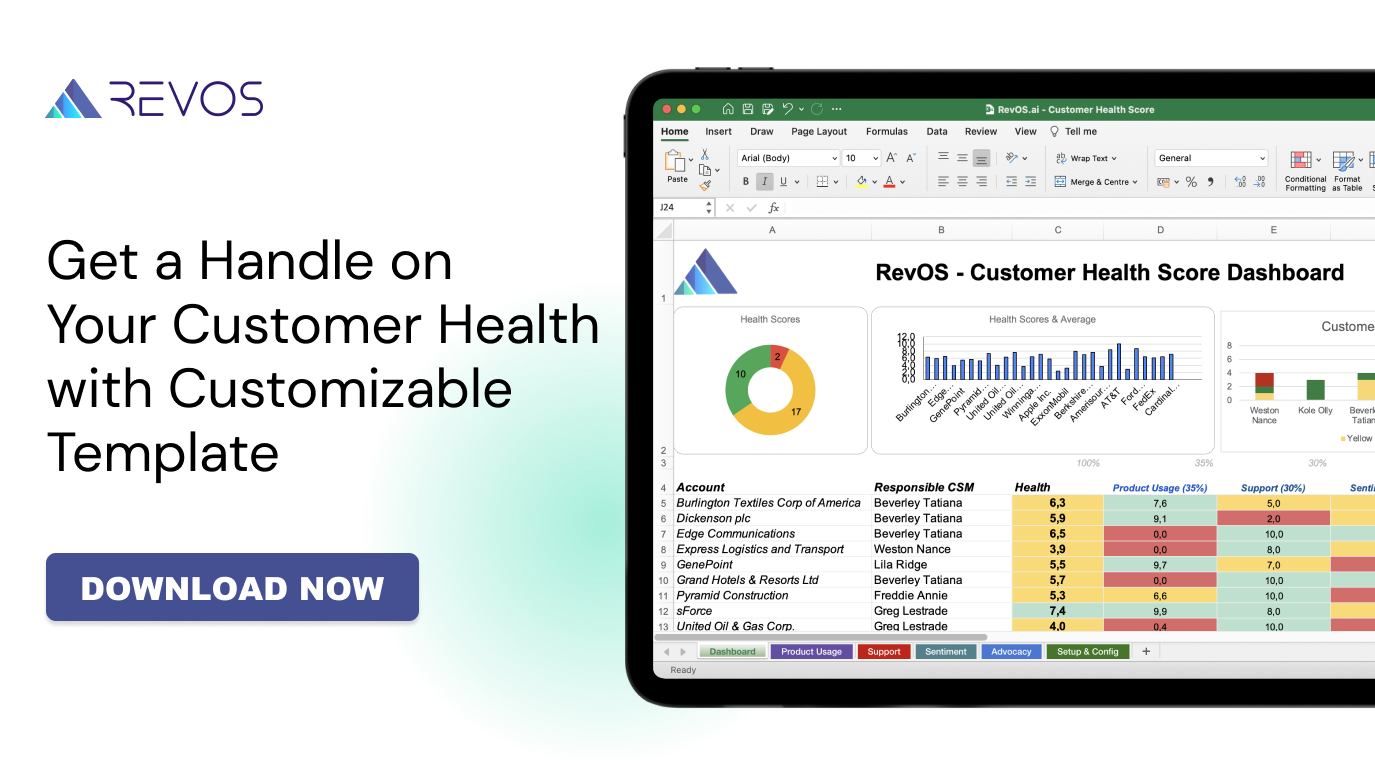The Power of WAU/MAU Ratio
 Renat Zubayrov
Renat ZubayrovCustomer success is the cornerstone of any successful business. To truly understand and improve customer satisfaction, businesses must have a clear understanding of their customer health. With this understanding businesses can take a proactive approach to customer satisfaction, leading to increased engagement, retention, and growth. So, let's dive in and explore the power of the WAU/MAU ratio (Weekly Active Users/ Monthly Active Users) as the KPIs for measuring customer health score and customer success.
How to calculate WAU/MAU?
This ratio is calculated by dividing the number of unique users who actively engage with a product or service over a week by the number of unique users who actively engage over a month. A higher WAU/MAU ratio indicates that a higher percentage of users are regularly engaging with the product or service, indicating a healthier and more engaged customer base.
What is a good WAU/MAU value?
A good value for the WAU/MAU varies depending on the industry and type of product or service. Generally, a ratio of 0.3 to 0.5 is considered good, indicating that 30-50% of monthly active users are also active on a weekly basis. For example, if a company has 1,000 monthly active users, a WAU of 300-500 would be considered good. It is important to keep in mind that different industries and types of products/services may have different benchmarks for what constitutes a good WAU/MAU ratio, and that the ratio should also be considered in the context of overall business goals and metrics.
Challenges
- Measuring and controlling the WAU/MAU ratio can be challenging due to several factors:
- Data Accuracy: Ensuring that the data used to calculate the ratio is accurate and reliable can be a challenge, especially if the data is being collected from multiple sources.
- User Identification: Distinguishing unique users can be difficult, especially if users are accessing the product or service through multiple devices or using anonymous accounts.
- Seasonality: The WAU/MAU ratio can be affected by seasonal fluctuations in user engagement, making it difficult to accurately measure and control the metric.
- Changes in User Behavior: Changes in user behavior, such as new features or product updates, can impact the WAU/MAU ratio and make it difficult to control.
- Interpreting Results: Interpreting the results of the WAU/MAU ratio can be challenging, especially when considering the impact of external factors such as marketing campaigns or industry trends.
Alternatives to WAU/MAU ratio
There are several alternative metrics that can be used instead of, or in conjunction with, the WAU/MAU ratio to measure customer engagement and health:
- DAU/MAU (Daily Active Users to Monthly Active Users) ratio: Measures the percentage of monthly active users who engage with a product or service on a daily basis.
- Retention Rate: Measures the percentage of users who return to a product or service over a specific period of time.
- Churn Rate: Measures the rate at which users stop using a product or service.
- Lifetime Value (LTV): Measures the estimated revenue that a customer will generate for a business over the entire time they use the product or service.
- Net Promoter Score (NPS): Measures customer satisfaction and loyalty by asking users to rate their likelihood of recommending a product or service to others.
The Power of the WAU/MAU Ratio for Customer Success
By tracking the WAU/MAU ratio, businesses can better understand and improve customer satisfaction. For example, if a business sees a drop in the WAU/MAU ratio, it can take steps to improve customer engagement and satisfaction by offering promotions or new features. On the other hand, if a business sees an increase in the WAU/MAU ratio, it can capitalize on customer satisfaction by offering additional products or services.
The Power of the WAU/MAU Ratio for Business
The WAU/MAU ratio also provides valuable insights for businesses looking to grow. A high WAU/MAU ratio is a good indicator that a business's products or services are in demand, allowing for opportunities for growth and expansion. A low WAU/MAU ratio, on the other hand, may indicate that it's time for a business to reconsider its offerings or strategy.

To help figure it out with WAU/MAU ratio we launched a holistic on-demand training that captures even metrics for a successful business - The Customer Health Scoring Practical Course. In one package you'll get a ready-to-use Template for Google Sheets and Microsoft Excel with customizable formulas that capture every detail, case studies with the best practices, and a useful video tutorial on how to set up your own dashboards.
The template was built from deep-dive interviews with over 80 customer success professionals and over 200 comments and improvements, and for our readers, we have a special discount code - with a code LINKEDIN50 you’ll get a 50% off the regular price.
With our comprehensive course material, practical insights, and easy-to-use template, you'll be able to drive customer retention and growth like never before. As a specialist in customer health scores, you'll be in high demand and able to command a better salary. Don't miss out on this opportunity to invest in your professional development and see the financial benefits for yourself!
In conclusion, the WAU/MAU ratio is a powerful tool for businesses looking to understand and improve customer satisfaction and success. By tracking this metric, businesses can gain a better understanding of customer engagement and use that knowledge to drive growth and success.
Read more about revenue operations, growth strategies, and metrics in our blog and follow us on LinkedIn, Youtube, and Facebook.
← Go back to blog